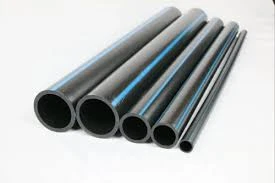Oct . 16, 2024 07:35 Back to list
20mm HDPE Sheet Applications and Benefits for Various Industries
Understanding HDPE Sheets The Versatility of 20mm Thickness
High-Density Polyethylene (HDPE) is a type of thermoplastic polymer that has gained widespread popularity in various industries due to its incredible properties and versatility. Among the various thickness options available, 20mm HDPE sheets stand out for their robustness and multifaceted applications. This article explores the characteristics of HDPE sheets, their uses, and why a 20mm thickness is often favored.
What is HDPE?
High-Density Polyethylene is a petroleum-based plastic known for its high strength-to-density ratio. It is an environmentally friendly option, as it's recyclable and can be reused in various applications. HDPE is produced through the polymerization of ethylene, a process that results in a dense polymer with high chemical resistance, durability, and impact strength.
Characteristics of 20mm HDPE Sheets
1. Durability One of the primary attributes of HDPE sheets is their durability. The 20mm thickness provides enhanced resistance against physical impacts, making it suitable for applications that require a strong material that can withstand significant wear and tear.
2. Chemical Resistance HDPE is renowned for its resistance to a broad range of chemicals, including acids, bases, and solvents. This property ensures that 20mm HDPE sheets can be used in environments where exposure to harsh substances is common, such as in laboratories, manufacturing plants, and chemical storage facilities.
3. Low Moisture Absorption Another key characteristic of HDPE is its low moisture absorption rate. This quality allows 20mm HDPE sheets to maintain their structural integrity even in humid conditions, making them ideal for outdoor uses and applications requiring moisture resistance.
4. UV Resistance Certain grades of HDPE are treated to provide UV resistance. This quality is essential for outdoor applications, as it prevents degradation from sun exposure. The incorporation of UV-resistant additives in 20mm sheets extends their lifespan considerably, allowing them to maintain their aesthetic and functional properties longer.
5. Lightweight Despite their strength, HDPE sheets are relatively lightweight. This property makes handling and installation easier, reducing labor costs and improving efficiency in various projects.
hdpe sheet 20mm

Applications of 20mm HDPE Sheets
The applications of 20mm HDPE sheets are vast and varied, encompassing many industries
1. Construction In the construction industry, HDPE sheets are commonly used for liners and barriers in landfills and ponds due to their excellent impermeability to liquids. They also serve as protective layers beneath foundations, preventing soil erosion and moisture penetration.
2. Food Industry The non-porous nature of HDPE sheets makes them ideal for food contact applications. They are widely used in food processing environments as cutting boards, countertops, and packaging materials, ensuring safety and hygiene.
3. Marine Given their resistance to moisture and decay, 20mm HDPE sheets are used in marine applications for boat building, docks, and other watercraft components where durability and resistance to rot are crucial.
4. Agriculture In the agricultural sector, HDPE sheets are used for greenhouse structures, irrigation systems, and as liners for ponds and tanks. Their resistance to chemicals also makes them valuable for pesticide and fertilizer storage.
5. Signage and Advertising The excellent printing properties of HDPE allow for vibrant signage and advertising displays, which are durable and weather-resistant, making them suitable for outdoor use.
Conclusion
The significance of 20mm HDPE sheets is evident in their diverse applications across numerous sectors. Their durability, chemical resistance, lightweight nature, and adaptability make them a preferred choice for many professionals seeking reliable material solutions. Whether for construction, food processing, or agricultural uses, HDPE sheets continue to demonstrate their worth, contributing to efficiency and innovation in modern industry. As technology progresses, the versatility of HDPE is likely to expand even further, solidifying its essential role in various applications.
-
High-Quality PPR Pipes and Fittings Durable ERA PPR & PVC PPR Solutions
NewsJul.08,2025
-
Black HDPE Cutting Board - Durable, Non-Porous & Food Safe HDPE Plastic Cutting Board
NewsJul.08,2025
-
High-Quality CPVC Panel Durable HDPE & PVC Panels Supplier
NewsJul.08,2025
-
Double PE Welding Rod Supplier - High Strength, Durable & Versatile Welding Solutions
NewsJul.07,2025
-
High-Quality PVC-O Pipe Supplier Durable 75mm PVC Pipe & Connections Leading PVC Pipe Company
NewsJul.07,2025
-
HDPE Drainage Pipe Supplier – Durable & Corrosion-Resistant Solutions
NewsJul.06,2025

